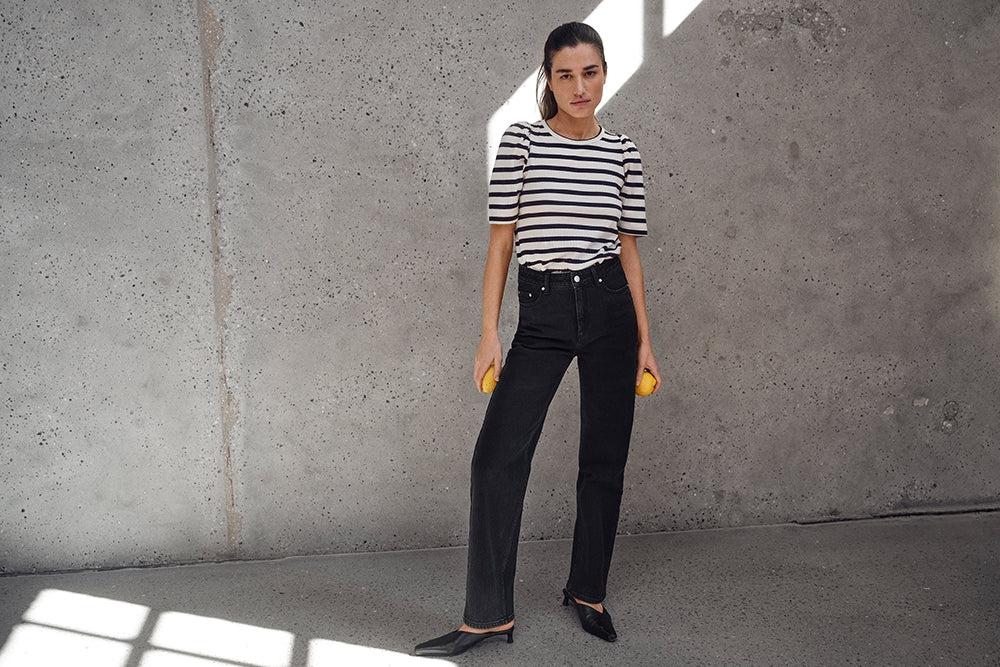MUNTHE ART MONDAY: Ida Sønder Thorhauge
Name: Ida Sønder Thorhauge
Instagram: @idathorhauge
Website - www.idathorhauge.com
Please introduce yourself and what you do.
My name is Ida Sønder Thorhauge. I was born in 1990. I have a diploma from The Jutland Art Academy (2011-2016). In 2016-2018 I was part of the artist collective Piscine. In 2018-2019 I was in a one-year programme as part of receiving Bikubenfonden’s studio grant for upcoming artists. I live in Copenhagen and my studio is in Amager. I primarily work with figurative and expressive painting in a classical and expanded field. My motifs include archetypal figures such as a young woman, a witch, a villain, a horse and death, often surrounded by recognizable icons and symbols, such as roses, butterflies, skulls or moons. The female as an (art)historical and mythological figure is an important character in my work.
How has being a woman affected your career?
It’s a complex question, and I could answer this in so many different ways. I think being a woman is important in relation to the content of my paintings. Over the years I’ve listened to a lot of problematic statements from my surroundings based on my gender, and most often I didn’t even ask for any advice: “You won’t have the same level of success when you start to get wrinkles”, “If you decide to have a baby your career will end”, “You should never ever put out selfies online to impress others with your looks, this will damage your career”. To mention a few. I am convinced they mean no harm, and I know I am also reproducing problematic patterns, even if I try to be alert. I think people are actually trying to help. But when we keep telling each other the same things we were told as young artists, things are not gonna change. As a kid my toys were stuff like baby dolls, barbies and a small plastic kitchen to cook in. A cultural upbringing that was based on the values of becoming a beautiful woman, wife and mother. This normative way of thinking is so integrated in society, in our bodies and minds. Thinking about the general normative powers and existing problematic sexist, racist structures in society raises so many existential questions which I deal with both in life and in my painting process.
What themes do you pursue in your art?
My paintings are a lot about duality, cycles and transformations. A dualism can be an instance of opposition or contrast between two concepts or two aspects of something, but they might also depend on each other and have a cyclic nature. Some of the dualisms existing in my paintings are life and death, youth and old age, femininity and masculinity, love and loneliness, strength and fragility, the beautiful and the ugly, the naive and the complex to mention some.
Explain your process.
I am preoccupied with icons - how they arise and how they are shaped by history, thus shaping our thinking. I am fascinated by how specific motifs recur in different styles and periods of the painting history, for example the painting of a young woman and death. This motif was painted by Hans Baldung Grien, “Der Tod und das Mädchen” (1517) and Edvard Munch, “Der Tod und das Mädchen” (1893). Egon Schiele, Gustav Klimt and Ursula Reuter Christiansen also made versions of this motif. Why are some motifs so important to us? I find this both creepy and fascinating. I draw clear parallels to the works of great male artists as an attempt to take the female motif to a place where the gaze belongs to the woman herself. I often use a reference to an iconic work as a starting point to build up a main motif, which will give birth to a series of new paintings. In this main motif, which would be the first painting, I select some details, which I apply and blow up in scale on new canvases. Every new painting has to work on its own premises. It might have some different colors or shapes, and it can be difficult to recognize that it’s an extract from the first one. With this kind of process, I have some ideas where to go, but at the same time the paintings have their own sayings. I like this way of working because it has the same feeling of something haunting or recurring existing between the works.

How does gender affect your work?
Gender definitely plays a role in my work. People often ask me why there are so many women in my paintings. In my own opinion the characters in my paintings are more androgynous. With small heads, broad shoulders, long necks and big, strong thighs their bodies consist of both traditionally masculine and feminine qualities. I like gender to be something more fluid in my works.

We will publish a new interview with a female artist every Monday. Follow MUNTHE ART MONDAY here.






